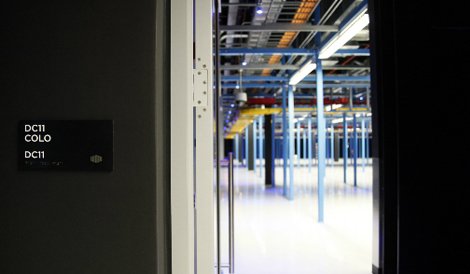Equinix is proving how strong the networking effect of a campus can be this week, opening its eighth facility on its Washington DC campus - DC11 - adding more than 42,000 sq ft of colocation space as Phase 1.
Demand has already started to roll in for the facility, according to Equinix regional operating chief for the Americas Raouf Abdel, much of this due to the “magnetic effect” a campus of the size of Equinix’ Washington DC one can have on colocation customers.
“We have been in Washington DC for north of 12 years now,” Abdel said.
“It has been steady growth ever since.
“We see wherever we are investing in an existing market, we tend to build to demand but campuses like this have a networking effect - the bigger the campus gets the more magnetic it becomes as there is no higher performance for a customer then when they can be beside someone they need to connect with.”
Abdel said Washington DC and New York are two of the largest markets for Equinix, Washington being driven largely by the presence of the US Government and the industries that feed off of it.
Equinix treats its eight buildings on campus as one virtual building, Abdel said, building in fiber connectivity between each.
Equinix' Washington DC campus
DC11 so far contains room for 1,200 cabinets, and while it has been operating for only two months one customer – that cannot be named - is already operating inside of the facility.
Cabinets inside Equinix Washington DC11
This week’s launch is only Phase 1 of the build. Abdel said Equinix plans to bring more space online as required, building up to its maximum size of with 230,000 sq ft, 117,000 sq ft of which is for colocation space, with 25MW of power secured, 15 of which can be for IT load.
He said Equinix is most likely to start building out Phase 2 within a year, given predictions for the site and current cycles of demand.
DC11 marks the end of the Washington campus build, but the colo player has secured a further 40 acres across from its DC10 facility on the campus, which was launched late last year.
“This is a really strong market in general,” Abdel said.
“It is awash with a broad base of businesses and while the market is a bit more of a wholesale nature, there are several campuses, which have a huge networking effect.”
This networking effect has also led to Equinix’ campus to develop one of the largest internet exchange points in North America in terms of traffic, with more than 400Gbps at peak load.
“We have north of 10,000 cross connects on campus, which also speaks for the ecosystem. And we believe this makes it one of the largest exchange hubs in the world in terms of cross connects,” Abdel said.
While many of Equinix’ data centers on campus have been built to similar specs and standards, Abdel said Equinix has taken new steps for greater levels of efficiency at DC11, which has a target power usage effectiveness (PUE) of 1.4 “once loads get to a meaningful level”.
It has deployed electrical skis for its electrical systems, which were built in a more efficient manner – offsite then delivered into the building and wired up and turned on.
“This is very efficient from an installation perspective and electrical efficiency standpoint, and is just one of the forms of state-of the art technology we are deploying at this facility,” Abdel said.
It has also deployed a state-of-the-art packaged chiller platform with high efficiency that sits on the roof of its building, removing the need for CRACS and CRAH units inside the data center space itself.
“This blows cool air through a duct system into the space,” Abdel said.
Equinix has offered a view inside its latest data center – Washington DC11. See the images below.
Equinix DC11

